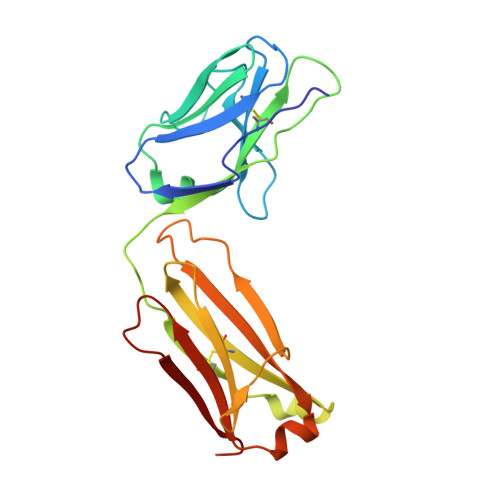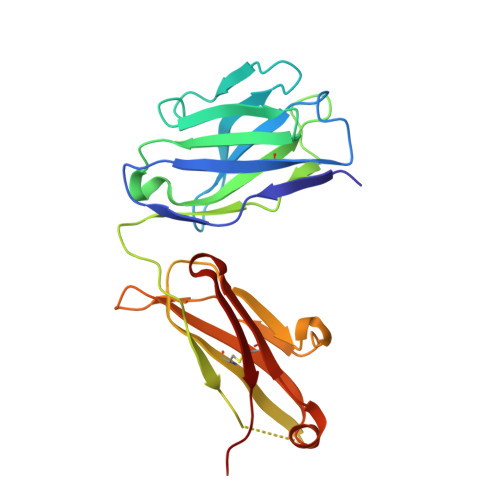Humanized Affinity-matured Monoclonal Antibody 8H9 Has Potent Antitumor Activity and Binds to FG Loop of Tumor Antigen B7-H3.
Ahmed, M., Cheng, M., Zhao, Q., Goldgur, Y., Cheal, S.M., Guo, H.F., Larson, S.M., Cheung, N.K.(2015) J Biol Chem 290: 30018-30029
- PubMed: 26487718
- DOI: https://doi.org/10.1074/jbc.M115.679852
- Primary Citation of Related Structures:
5CMA - PubMed Abstract:
B7-H3 (CD276) is both an inhibitory ligand for natural killer cells and T cells and a tumor antigen that is widely expressed among human solid tumors. Anti-B7-H3 mouse monoclonal antibody 8H9 has been successfully used for radioimmunotherapy for patients with B7-H3(+) tumors. We present the humanization, affinity maturation, and epitope mapping of 8H9 based on structure determination, modeling, and yeast display methods. The crystal structure of ch8H9 Fab fragment was solved to 2.5-Å resolution and used as a template for humanization. By displaying the humanized 8H9 single chain Fv (scFv) on the surface of yeast, the affinity was matured by sequential random mutagenesis and fluorescence-activated cell sorting. Six mutations (three in the complementarity-determining region and three in the framework regions) were identified and incorporated into an affinity-matured humanized 8H9 construct (hu8H9-6m) and an affinity-matured chimeric 8H9 construct (ch8H9-6m). The hu8H9-6m scFv had a 160-fold improvement in affinity (0.9 nm KD) compared with parental hu8H9 scFv (144 nm KD). The IgG formats of ch8H9-6m and hu8H9-6m (nanomolar to subnanomolar KD) had 2-9-fold enhancements in affinity compared with their parental forms, potent in vitro antibody-dependent cell-mediated cytotoxicity (0.1-0.3 μg/ml EC50), and high tumor uptake in mouse xenografts. Based on in silico docking studies and experimental validation, the molecular epitope of 8H9 was determined to be dependent on the FG loop of B7-H3, a region critical to its function in immunologic blockade and unique among anti-B7-H3 antibodies published to date.
Organizational Affiliation:
From the Departments of Pediatrics and.















